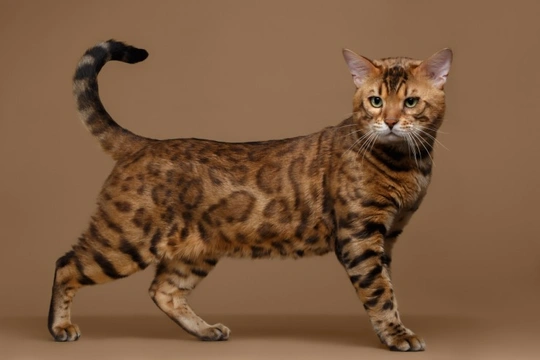
Five important things to know before buying a Bengal cat
The Bengal cat breed is one of the most unique and distinctive domestic cat breeds of all, thanks to not only their eye-catching appearance but the fact that the Bengal breed was created by the crossing of domestic cats with the Asian Leopard Cat, a small, wild feline breed.
This crossing was intended to produce a domestic cat with many of the desirable traits of wild cats, such as the distinctive coat of the breed that often mimics that of their wild ancestors, and has a unique, very sleek texture.
The Bengal temperament too is generally quite different to that of other cats, and some owners say that they are almost dog-like in terms of their intelligence, ability to be demanding, and the ways in which they show affection!
All of this means that it is certainly fair to say that the Bengal cannot really be compared like for like with the average moggy, and this is something that all potential Bengal owners should be aware of before falling for their charms and buying one.
It is vital to do plenty of research into the breed as a whole and their unique traits and care requirements before going ahead-but in this article, we will round up five of the most important things that you should know before committing to buy a Bengal cat or kitten.
Find out what generation crossing they are
As mentioned, the Bengal breed was created by crossing domestic cats with a small wild cat breed, which means that the first Bengals were 50% domestic and 50% Asian Leopard Cat. This is called an F1 cross, and you will usually see Bengals advertised with an “F” designation, and knowing what this means is important.
An F2 cross is a cat produced from breeding two F1 crosses, and an F3 the next generation down; and so the lower a cat’s “F” number is, the more closely related they are to their wild heritage.
Knowing what generation cross a Bengal is is important for a lot of reasons. Firstly, the closer to an F1 they are, the more expensive that they will be; but also, the more wild traits the will retain, which can make them more of a handful.
Be aware that they can be very noisy
One of the breeds that was involved in the formation of the Bengal was the Siamese cat, and as any Siamese owner will tell you, Siamese cats tend to be pretty vocal! This trait of the Siamese, accompanied by the wild cat side of the ancestry means that most Bengals tend to be very vocal too, and will have a wide vocabulary that they are not afraid to use!
They often “talk” to their owners and make a lot of noise in general, especially if they are not getting their own way or feel as if they are being ignored!
They are often prolific hunters
Bengals are among the most active and successful hunters of all cat breeds, and many of them will come in loudly twittering about their success with every kill, which can happen several times a night when your cat really comes into their own!
Unless your cat is not allowed to go outside, this is not something that you are likely to be able to curb or control to any degree, so make sure that you understand this and accept it before you commit to owning a Bengal!
Bengals tend to be fairly high maintenance
In case you’ve not started to develop a clear picture already, Bengals do as a rule tend to be demanding and fairly high maintenance cats. They often bond strongly with their families and can be very demanding of their time and attention, which is just what many people want-but of course, this is not for everyone, and can drive some owners mad!
Owning a Bengal can in many ways be more like owning a dog than a cat, as they will often follow you around the house, yell for attention and want to get involved in everything that you are doing-and they very much dislike being ignored!
They are very energetic
Finally, the Bengal is a tall, lithe and very athletic breed of cat, which tends to be very active and energetic. They do sleep just as much as any other cat will, but when they are not asleep, they are apt to be tearing around, out hunting, or demanding that you find them something to do!
This means that you might find yourself woken up in the middle of the night by your Bengal leaping on you to demand attention, or racing around the house chasing imaginary prey! Owning a Bengal can really liven up your house, so make sure that this is what you want from your new pet and that you are not biting off more than you can chew!



